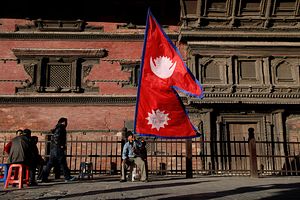Thirteen years after the end of the Nepali Civil War, the country is still struggling for justice. The transition from wartime to peacetime has traditionally been a fraught process for Asian governments. In the 21st century, many post-conflict nations in the region have looked toward Nepal to understand how society can best make this adaptation. The Nepali government’s prolonged stagnation does not bode well for the international evolution of transitional justice.
The End of the War: A Comprehensive Peace?
The Nepali Civil War ended in 2006 with the Comprehensive Peace Agreement (CPA), signed by the monarchist government and the insurgent Maoist rebels. The civil war left many victims: In a decade of conflict, approximately 16,000 people were killed, with 78,000 displaced and 1,300 still missing.
The CPA declared the beginning of a transitional justice process, in which perpetrators of abuse would be punished, victims vindicated, and society would progress into stable democracy. However, the years that followed were characterised by half-measures and mismanagement. Approximately four dozen separate transitional justice commissions were established, all of which were plagued by secrecy and impunity.
The Truth and Reconciliation Commission: Hopes Dashed
Following a sweeping victory in the 2013 election, the newly sworn-in government reaffirmed its commitment to transitional justice. The government entered consultations with leading advocates and human rights organizations to draft a bill that would implement a proper transitional justice framework. At midnight on April 25, 2014, the government passed the Truth and Reconciliation Commission Act (TRC Act), creating the long-promised Truth and Reconciliation Commission.
However, the act bore little resemblance to the bill that had been shown to victims and advocates. Rather than outlining a path to restorative justice, the TRC Act was written to protect those still in power from punishment and smooth over the past trauma. Most notably, the TRC Act contained a provision granting the possibility of amnesty for perpetrators of historic human rights violations. Advocates such as Om Prakash Aryal condemned the provision as proof of the Government’s intention to “steer the process towards mass amnesty,” thereby protecting alleged perpetrators who now hold senior positions in government and the army.
Arriving at a similar conclusion, on February 26, 2015, the Nepal Supreme Court ruled the TRC Act to be constitutionally unlawful. However, the government ignored the Supreme Court ruling, retaining the amnesty provisions. The Truth and Reconciliation Commission began its work, completing preliminary investigations into 6,000 cases of conflict-era abuse. However, no case has been litigated and key domestic and international stakeholders refuse to acknowledge the validity of the TRC Act while the amnesty provisions remain.
Where To From Here?
After two extensions, the mandate of the Truth and Reconciliation Commission expired on April 13, 2019. The commissioners stepped down and a recommendation committee was formed to elect new commissioners. However, no commissioners have been named. Speculation is rife that the government intends to stack the Commission with political allies. Recent developments seem to confirm this fear: Politicians who previously campaigned against the transitional justice movement are now reportedly being vetted for roles to serve as commissioners.
Nepal is at a crucial juncture in the transitional justice process. The government appears set on pursuing a policy that suppresses any true form of transitional justice. However, this consistent impunity has met sustained resistance from victim alliance groups and human rights advocates. The energy of the resistance highlights the fact that there is now more than the TRC Act at stake. As Raju Chapagai of Amnesty International notes, a failure to act will enhance the “culture of impunity” that is “increasingly deepening in our society” and is “not confined to the conflict-era crimes.” The reverberations of the government’s actions will be felt throughout Nepali society and the Asia-Pacific region.
The civil war ended in 2006, but justice has no time limit. In order for transitional justice to occur, and for Nepal to rebuild, sustained pressure is required. Currently, this pressure primarily comes from domestic and international NGOs: From the statutory initiation of transitional justice to the pressure to abolish amnesty for perpetrators, domestic and international NGOs have operated at the forefront of advocacy and change in the region. But for national justice to prevail in the future, this pressure must find renewed support from powerful international stakeholders and foreign governments, particularly those with a large Nepali diaspora. Only this widespread unification can ensure justice for victims and accountability for the future. By contrast, failure to provide justice will set a worrying precedent in the region.
Hugh Whelan is a freelance writer who recently completed work in Nepal with Advocacy Forum, a leading human rights NGO in the region.

































